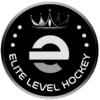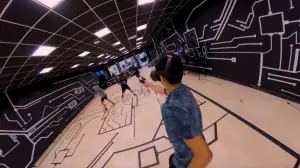The pride of Northside Lethbridge played his way through the Lethbridge Minor Hockey system before cracking the Lethbridge Hurricanes roster during as a 16 year old. Kris went on to play seasons in the Western Hockey League.
In 2004 Kris was drafted by the Boston Bruins in the 5th round and in 2007 Kris was traded to the Blackhawks, where he made his NHL debut on November 22nd against the Calgary Flames.
Kris has grown to be a lot more than just a hockey player from Lethbridge. He is one of the most genuine and caring people you’ll ever meet. He is constantly bringing awareness to the people and communities he has lived in. This past year Kris competed in the ‘Battle of the Blades’ with his skating partner Carlotta Edwards. Kris and Carlotta were able to raise over $15,000 for the Opokaa’sin Early Intervention Society and the Big Brothers and Big Sisters of Calgary and Area.
Kris, who currently resides in the Toronto area with his wife and three children, is an incredible role model for the next generation of athletes and serves as a reminder to always bet on yourself. He is still heavily involved with the game as the CEO of his new sports-tech platform Klevr, owner and operator of the Verset Hockey Camp, and a hockey analyst on Sirius XM.
SHEEN: I was just going to get background on you growing up playing hockey in Lethbridge.
VERSTEEG: Minor hockey was great! I think it’s a lot different now. Kids start at three years old now. I don’t think we really started until were six. Our age group was incredible. On our Bantam AAA team, we had three players that made the NHL — Devin Setoguchi, Rob Klinkhammer and myself. We had another two that played NCAA, another couple that played in the AHL. We had seven players turn pro.
Just growing up being surrounded by all these players that were so good obviously made me a lot better. Like man, we look back on that and we’re so spoiled. It is too bad we never got to win. We lost in the semi-finals, but it was such a good group. We’re all still really close friends today.
SHEEN: What was the jump like to junior hockey in the WHL?
VERSTEEG: Making the jump from Bantam into the WHL — especially in the early 2000’s — it’s a lot different then than it is now. You had guys like Derek Boogaard out there, Brett Scheffelmaiers, guys that are like 6-foot-7 and they are out there to basically rip you apart. The game is much different. Me — being 5-foot-6 at 16, 140 pounds — I was scared every game .
SHEEN: You wouldn’t have been drafted yet that first year?
VERSTEEG: I wasn’t drafted in 14 because we all played Bantam AA back then Bantam was fourteen and fifteen — now it’s 13 and 14 — so if you didn’t play Bantam AAA as a first-year, you were never getting drafted generally. And back then, the scouts didn’t look at you if you were small. The scouting now, they pick the best players. They don’t worry about size or height. Back then, at 14, they wanted you to be 6-foot with a moustache. I was like 5-foot-2 and was drinking Slurpees outside at 7-Eleven. I didn’t lift a weight until I was sixteen. I would go for runs when I was fifteen when my dad started tell me I had to do push-ups and run. We didn’t have any of that. It has just changed so much.
Going to the WHL was a crazy experience. Scoring my first-ever goal against Moose Jaw. And just looking in the stands and seeing all my friend watch me playing the WHL. It must have been pretty cool for them, but it was it was awesome for me.
SHEEN: As a kid following in your footsteps — I was a couple of years behind you — to watch you make the jump from Bantam to the WHL was incredible. You started to put up points too. You were a small guy so did you find that transition into the WHL coming straight from Bantam.
VERSTEEG: It was hard. It was a way different game. That’s when there was hooking and that was before the 2004 lockout. There was two-line passes and the rules were different. You were out there trying not to get murdered, basically. You didn’t have to have the puck and you were still getting blown up. There were line brawls. Pretty much every game there was a fight. It was just so different. You go from being a kid wearing a cage at 15 to being in a line brawl. You are just trying not to get hit every shift by guys like Boogaard — and I’m not fighting him — but just seeing DJ King and Boogaard fight, your kind of like ‘Wow. What is going on here’. It was a complete whirlwind. But yeah, it was it was just such a different game, such a different world. I was worried about trying to come out in one piece from these games.
SHEEN: I can imagine. The two-line pass kind of traps guys in and that’s where those heavy hits come in the neutral zone.
VERSTEEG: Suicide passes were big at the red line because a guy has his head down, trying to stay onside on the red line, and guys would just tee you up the red line.
SHEEN: And that’s what the scouts were looking for — guys who could pick up that timing.
VERSTEEG: It was so different then. I remember even in Bantam and PeeWee — we started hitting at 12, I believe — it was just full out war out there some games. If both Lethbridge Peewee AA teams are playing each other, the parents are in the stands screaming at each other, there are kids hitting each other as hard as they can from behind.
I remember the one Pee-Wee AA team, they had this play with Rob Klinkhammer and he would tie me up on the opening faceoff and Kyle Mason would run me from the blue line and blow me up. Then you hear the fans and the parents screaming like ‘Screw You, Versteeg’. Cheering. We are 12 years old.
I don’t really care about that but I look back and it such a different game. Such a different game. The slashing and the hitting to the head. I didn’t like any of that. I believe that there should be no heading to the head at all, but back then everything was to the head. Everything was a slash or a crosscheck to the back of the neck. It was pretty vicious. Being my size, it wasn’t easy to always back it up.
SHEEN: It was a scary moment going from Atom into PeeWee and now you are hitting. I still remember that and I am 32 years old. I remember what it was like to get into the hitting thing.
VERSTEEG: Do you remember the LA Prep camps?
SHEEN: Oh, ya.
VERSTEEG: Those were a war.
SHEEN: The gauntlet!
VERSTEEG: So what would happen is you’d be 10, turning 11 and you be hitting. And you play a year up. In Ontario, they only play year by year but in Alberta and Saskatchewan, where there is not enough kids, you play a year under, year over. You’re playing against over agers at this LA Prep camp, you haven’t been hit your whole life, and you’re going in — they don’t even play hockey in these camps it’s just murdering each other for like an hour or so. It was crazy. Like you said, it was like you were a young kid going into the gauntlet.
SHEEN: And the parents cheered when you got rocked! My own parents wanted me to get hit.
VERSTEEG: That was the 90s though, man, and that is just how it was. I don’t look back on it and go ‘How could that happen?’ It’s just I’m happy that it’s not like that anymore
SHEEN: I guess you’re seeing first hand now with your kids. What has your experience been like? How has it changed?
VERSTEEG: First off they start a 3 years old. My oldest now he’s almost 6, I put him in at 3 and he didn’t like it and I put him back in at 4 and he liked it. My four-year-old, I put him in at 3 and he liked it. Kids start at 3 now and they’re on the ice two days a week at 3. Some kids will do privates now at 5. The kids are doing private session now a lot of them at a young age.
You still want to find ways to intrigue kids to make it fun. I’m finding you don’t want to overburden with structure so generally when I’m out there with the kids it is about using your imagination and your creativity. My kids to go to the pond in the winter and they would play for like four hours and they didn’t get told what to do. But the second you bring them into a practice and you’re screaming at them and you’re giving them instruction, that’s when I think you start to see the burnout. Its a mental burnout because you’re being harped on — ‘You got to do THIS’ — and that’s why when I do a little bit of instruction with kids and I try to like teach them to make sure they stickhandle with their head up. Its about making it fun but also getting them to use their creativity and not feel like they’re being hampered by instruction because I think that’s a huge issue.
SHEEN: You are absolutely right. You let some kids go play on their own and they will play for hours but as soon as you tell them to do one thing they get bored of that really easily.
VERSTEEG: Yeah and that’s where you can see the burn out. Especially for five-year-olds, man, you want them to learn to skate with their head up, to stickhandle. You can do skating lessons as you start to get a little bit older but the overbearingness will wear on a kid for sure, the mental part anyway,
So you need to make it fun but you also want to make them better too, but it’s a fine line in doing that. The biggest thing is, I know I said it like 50 times, but just overbearing instructions for a child is something I’m learning that they don’t want all the time.
SHEEN: What do you think in terms of multi-sport?
VERSTEEG: My kids play all sports but they love soccer, they love baseball obviously. I think soccer, for myself, was the biggest key contributor — after roller hockey — to help me out playing hockey at a higher level.
SHEEN: When did you stop playing soccer
VERSTEEG: When I was 12.
SHEEN: So you got a good six years of conditioning and running. It helps your lower body balance too.
VERSTEEG: Yeah, just making plays with my feet in the hockey and and going in the battles. Really like every player in the NHL, the biggest thing that they do, compared to a player in the AHL or the ECHL, is controlling ‘first touch’. If you’re watching an MLS game or are you watching a Premiership game you can see a ball go across the field in the MLS and the player I’ll touch it and then he will lose it. Not in the EPL. It’s the same as a cross-ice pass in the air in hockey. The player will knock it down in the NHL and control it. In the AHL or East Coast league, either they miss it or they don’t know how to create time and space to make a play.
Roller hockey and soccer gave me “NHL first touch” skills.
SHEEN: That’s what I think about when I think of you playing in the NHL. You could lose the puck but you could get it back real quick or pushing it with your feet you were able to make play. You definitely have those little skills that separated you from everyone else.
VERSTEEG: I think I got it from other sports. Roller hockey, while not an entirely different sport, but when you’re forced to move the puck — where as in hockey the puck slides — and that means you’re using your hands more. It’s more of a skill game. I never had a skating coach. I didn’t have a skills coach. None of us did, especially in Lethbridge. None of us could afford one. So the only way for us to get more skilled was to learn how to create space by playing sports like roller hockey. I still love it. It is my favourite sport I think.









